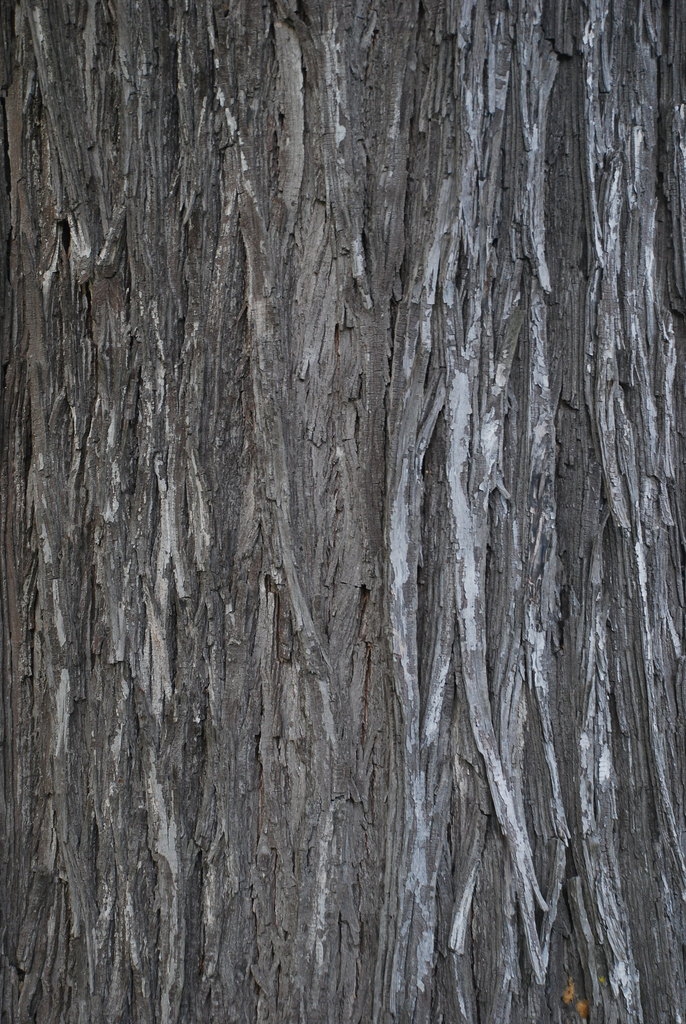Red Hickory Carya ovalis
Other Common Name(s):
Other plants called Red Hickory:
Previously known as:
- Carya glabra var. odorata
- Phonetic Spelling
- KAIR-yuh oh-VAL-liss
- Description
-
Sweet Pignut Hickory is a tree in the walnut family native to the central and southeastern U.S.A. In NC it is found primarily in the mountains and Piedmont areas of the state. It is a large tree growing up to 80 feet tall or larger with a deep taproot making it difficult to transplant. The trunk matures at 2-3 feet in circumference and the crown is rounded to oval. The nuts are sweet and sold commercially, maturing in late summer to fall.
Grow this tree in moist fertile well-drained soil in full sun to partial shade. Use as a shade tree for large spaces or in a woodland setting. It has great wildlife value providing nesting sites and food for birds and small mammals and is a host plant for moths and butterflies. Fruit drop can be messy.
This tree serves as a food source for the Hickory Horndevil (Citheronia regalis) and the Luna (Actias luna) moth.
- See this plant in the following landscape:
- Cultivars / Varieties:
-
- Tags:






























- Cultivars / Varieties:
-
- Tags:
-
-
Attributes:
- Genus:
- Carya
- Species:
- ovalis
- Family:
- Juglandaceae
- Uses (Ethnobotany):
- Wood is used for making a variety of items, firewood and smoking meats.
- Life Cycle:
- Woody
- Recommended Propagation Strategy:
- Seed
- Country Or Region Of Origin:
- Central and southeastern U.S.A.
- Wildlife Value:
- This plant attracts birds and is a larval host for butterflies and moths, including the Luna moth. Small mammals will eat the nuts. This plant supports Hickory Horndevil (Citheronia regalis) larvae which have one brood and appear from May to mid-September. Adult Hickory Horndevil moths do not feed.
- Play Value:
- Wildlife Food Source
- Wildlife Larval Host
- Edibility:
- Nuts are edible and sold commercially.
- Dimensions:
- Height: 70 ft. 0 in. - 100 ft. 0 in.
- Width: 50 ft. 0 in. - 70 ft. 0 in.
-
-
Whole Plant Traits:
- Plant Type:
- Native Plant
- Tree
- Woody Plant Leaf Characteristics:
- Deciduous
- Habit/Form:
- Erect
- Oval
- Rounded
- Maintenance:
- Medium
-
-
Cultural Conditions:
- Light:
- Full sun (6 or more hours of direct sunlight a day)
- Partial Shade (Direct sunlight only part of the day, 2-6 hours)
- Soil Texture:
- Clay
- High Organic Matter
- Loam (Silt)
- Soil Drainage:
- Good Drainage
- Moist
- NC Region:
- Coastal
- Mountains
- Piedmont
-
-
Fruit:
- Fruit Value To Gardener:
- Edible
- Display/Harvest Time:
- Fall
- Summer
- Fruit Type:
- Nut
- Fruit Length:
- 1-3 inches
- Fruit Width:
- 1-3 inches
- Fruit Description:
- 1-1.5 inches long oval husk that splits into 4 sections revealing a thick shell with a whitish nut inside in late summer to fall.
-
-
Flowers:
- Flower Color:
- Gold/Yellow
- Green
- Flower Inflorescence:
- Catkin
- Insignificant
- Flower Bloom Time:
- Spring
- Flower Description:
- Male flowers are in drooping yellow-green catkins 2-4 inches long. Female flowers are short red spikes in groups of 2-3 at tips of branches. Blooms late spring.
-
-
Leaves:
- Woody Plant Leaf Characteristics:
- Deciduous
- Leaf Color:
- Green
- Leaf Feel:
- Glossy
- Deciduous Leaf Fall Color:
- Brown/Copper
- Gold/Yellow
- Leaf Type:
- Compound (Pinnately , Bipinnately, Palmately)
- Leaf Arrangement:
- Alternate
- Leaf Shape:
- Elliptical
- Lanceolate
- Leaf Margin:
- Serrate
- Hairs Present:
- No
- Leaf Length:
- 3-6 inches
- Leaf Width:
- 1-3 inches
- Leaf Description:
- Alternate compound leaves are 12 inches long and 8 inches across. There are usually 7 leaflets that are 3-6 inches long and 1-2 inches across. They are elliptic to lanceolate-elliptic with serrated margins. Tips are acute and bases wedge-shaped. They are sessile or nearly so. The leaflets are dark green and shiny while the undersurface is duller and lighter in color. Fall color is yellow to yellow-brown.
-
-
Bark:
- Surface/Attachment:
- Furrowed
- Ridges
- Shaggy
- Bark Description:
- Young trees have relatively coarse gray bark with irregular furrows and ridges, while the bark of older trees is more shaggy with the strips recurved outward.
-
-
Stem:
- Stem Color:
- Brown/Copper
- Gray/Silver
- Stem Is Aromatic:
- No
- Stem Bud Terminal:
- Only 1 terminal bud, larger than side buds
- Stem Cross Section:
- Round
- Stem Leaf Scar Shape:
- Heart or shield shaped
- Stem Lenticels:
- Conspicuous
- Stem Description:
- Twigs light brown and glabrous with scattered white lenticels, branches light gray and smooth, larger branches with shallow furrows.
-
-
Landscape:
- Landscape Location:
- Lawn
- Recreational Play Area
- Landscape Theme:
- Butterfly Garden
- Edible Garden
- Native Garden
- Nighttime Garden
- Pollinator Garden
- Design Feature:
- Shade Tree
- Attracts:
- Butterflies
- Moths
- Pollinators
- Predatory Insects
- Small Mammals
- Songbirds
- Problems:
- Messy







